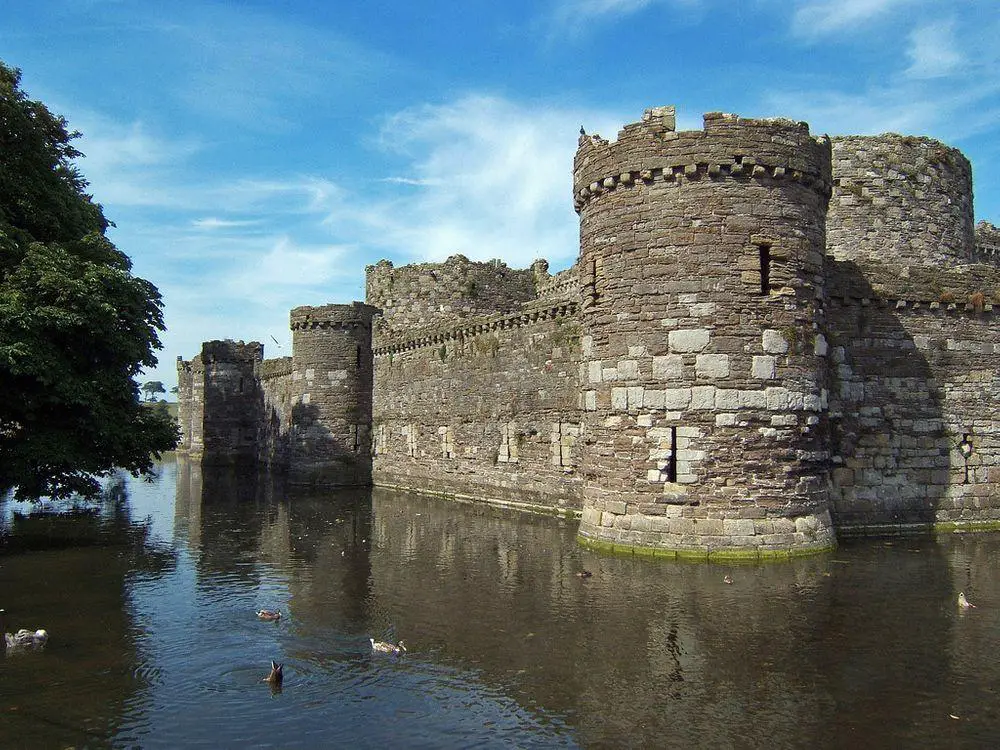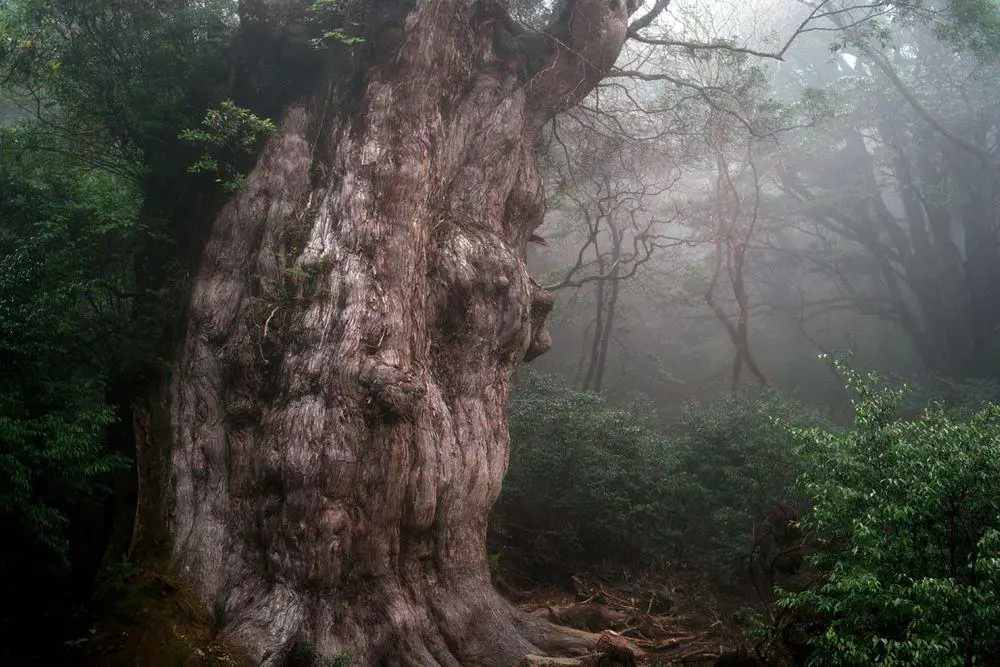 In short
In short
Currently, the ancient yew at Landry church is not too impressive – three closely located trunks rise from a low mound. But these trunks mark a site where earlier grew a giant, ancient yew tree.
 29.8%
29.8%
GPS coordinates
Location, address
Species
Circumference
Map of the site
If you see this after your page is loaded completely, leafletJS files are missing.
 In detail
In detail
Llandre or, a full name – Llanfihangel Genau’r Glyn – is a picturesque Welsh village.
To the west, at the end of a deep gully is located the local church – St Michael’s Church. The current church was built in 1875 but this is the third church in this location. The first one was built already in Norman times. The church was built in an ancient sacred site as testified by the ancient holy well under the southern wall of the church (1.), as well as an ancient yew tree.
Today the former giant yew at Llandre Church has three fragments. Most likely, initially, there was a hollow in the bole, that gradually opened in several directions, dividing the former tree into several separate trees.
Another possibility, though, is that the old tree died away and from its roots rose new offshoots.
In 1878 the botanist Edwin Lees mentioned that the ancient tree divided into twelve pieces “to the ground”.
The old, former trunk is not seen – but the tree(s) grow on a mound. Such mounds are characteristic of very old yew trees, most likely created by centuries-long fall of branches and leaves of the tree.
All three trees are female.
The girth around all three trunks at the ground level is 10.31 m (2., 2008). One can discuss whether this measurement has much accuracy regarding the size of the former giant tree, but it gives some understanding about it.
The tree was overgrown with bush but in 2005 this undergrowth was cleaned (3.).
References
- History, Treftadaeth Llandre / Llandre Heritage. Accessed on December 15, 2023.
- Yew/Yews at Llandre Wales, Ancient Yew Group. Accessed on December 15, 2023.
- Ancient graveyard yew tree saved, Wales Online, 20 October 2005. Accessed on December 15, 2023.
 Linked articles
Linked articles

Wonders of Wales
In Wales are located some of the most beautiful caves and waterfalls in the United Kingdom but even more are some of the world’s most impressive castles as well as medieval towns, palaces, and interesting archaeological monuments.

Trees
The category includes some of the most impressive and interesting separate trees in the world. The total number of tree species in the world still is a wild guess – maybe 10,000 and maybe 100,000 but most likely somewhere in between. Every month there are reported new tree species from the whole world, including Western Europe.

Wonders of the United Kingdom
Throughout many centuries the United Kingdom has enjoyed relative political stability and wealth. As a result, humans have created here countless amazing and well-preserved values of art and history.
 Recommended books
Recommended books
The God Tree
The God Tree is a great read and will make people think again and again about Yews’ – David Bellamy, the Naturalist. This is the first book to take up the quest for the Golden Bough since JG Frazer’s classic study in 1915 with the discovery of the bough growing once more, as the rare adornment of a small number of ancient Yews.
The Ancient Yew: A History of Taxus baccata
The gnarled, immutable yew tree is one of the most evocative sights in the British and Irish language, an evergreen impression of immortality, the tree that provides a living botanical link between our own landscapes and those of the distant past. This book tells the extraordinary story of the yew’s role in the landscape through the millennia, and makes a convincing case for the origins of many of the oldest trees, as markers of the holy places founded by Celtic saints in the early medieval ‘Dark Ages’.


